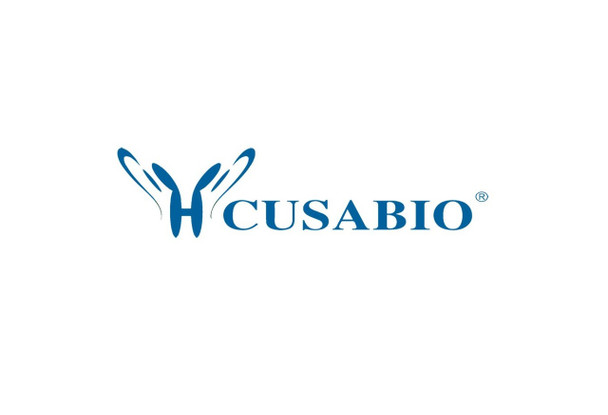Cusabio Human Recombinants
Recombinant Human X-ray repair cross-complementing protein 6 (XRCC6), partial | CSB-RP016174h
- SKU:
- CSB-RP016174h
- Availability:
- 13 - 23 Working Days
Description
Recombinant Human X-ray repair cross-complementing protein 6 (XRCC6), partial | CSB-RP016174h | Cusabio
Alternative Name(s): 5'-deoxyribose-5-phosphate lyase Ku70 ;5'-dRP lyase Ku7070KDA subunit of Ku antigen;ATP-dependent DNA helicase 2 subunit 1ATP-dependent DNA helicase II 70KDA subunitCTC box-binding factor 75KDA subunit ;CTC75 ;CTCBFDNA repair protein XR;CC6Lupus Ku autoantigen protein p70 ;Ku70Thyroid-lupus autoantigen ;TLAAX-ray repair complementing defective repair in Chinese hamster cells 6
Gene Names: XRCC6
Research Areas: Epigenetics and Nuclear Signaling
Organism: Homo sapiens (Human)
AA Sequence: SYYKTEGDEEAEEEQEENLEASGDYKYSGRDSLIFLVDASKAMFESQSEDELTPFDMSIQCIQSVYISKIISSDRDLLAVVFYGTEKDKNSVNFKNIYVLQELDNPGAKRILELDQFKGQQGQKRFQDMMGHGSDYSLSEVLWVCANLFSDVQFKMSHKRIMLFTNEDNPHGNDSAKASRARTKAGDLRDTGIFLDLMHLKKPGGFDISLFYRDIIS
Source: E.coli
Tag Info: N-terminal 6xHis-tagged
Expression Region: 6-222aa
Sequence Info: Partial
MW: 28.8 kDa
Purity: Greater than 90% as determined by SDS-PAGE.
Relevance: Single-stranded DNA-dependent ATP-dependent helicase. Has a role in chromosome translocation. The DNA helicase II complex binds preferentially to fork-like ends of double-stranded DNA in a cell cycle-dependent manner. It works in the 3'-5' direction. Binding to DNA may be mediated by XRCC6. Involved in DNA non-homologous end joining (NHEJ) required for double-strand break repair and V(D)J recombination. The XRCC5/6 dimer acts as regulatory subunit of the DNA-dependent protein kinase complex DNA-PK by increasing the affinity of the catalytic subunit PRKDC to DNA by 100-fold. The XRCC5/6 dimer is probably involved in stabilizing broken DNA ends and bringing th together. The assbly of the DNA-PK complex to DNA ends is required for the NHEJ ligation step. Required for osteocalcin gene expression. Probably also acts as a 5'-deoxyribose-5-phosphate lyase (5'-dRP lyase), by catalyzing the beta-elimination of the 5' deoxyribose-5-phosphate at an abasic site near double-strand breaks. 5'-dRP lyase activity allows to 'clean' the termini of abasic sites, a class of nucleotide damage commonly associated with strand breaks, before such broken ends can be joined. The XRCC5/6 dimer together with APEX1 acts as a negative regulator of transcription
Reference: Cloning and characterization of a cDNA that encodes a 70-KDA novel human thyroid autoantigen.Chan J.Y., Lerman M.I., Prabhakar B.S., Isozaki O., Santisteban P., Kuppers R.C., Oates E.L., Notkins A.L., Kohn L.D.J. Biol. Chem. 264:3651-3654(1989)
Storage: The shelf life is related to many factors, storage state, buffer ingredients, storage temperature and the stability of the protein itself. Generally, the shelf life of liquid form is 6 months at -20?/-80?. The shelf life of lyophilized form is 12 months at -20?/-80?.
Notes: Repeated freezing and thawing is not recommended. Store working aliquots at 4? for up to one week.
Function: Single-stranded DNA-dependent ATP-dependent helicase. Has a role in chromosome translocation. The DNA helicase II complex binds preferentially to fork-like ends of double-stranded DNA in a cell cycle-dependent manner. It works in the 3'-5' direction. Binding to DNA may be mediated by XRCC6. Involved in DNA non-homologous end joining (NHEJ) required for double-strand break repair and V(D)J recombination. The XRCC5/6 dimer acts as regulatory subunit of the DNA-dependent protein kinase complex DNA-PK by increasing the affinity of the catalytic subunit PRKDC to DNA by 100-fold. The XRCC5/6 dimer is probably involved in stabilizing broken DNA ends and bringing them together. The assembly of the DNA-PK complex to DNA ends is required for the NHEJ ligation step. Required for osteocalcin gene expression. Probably also acts as a 5'-deoxyribose-5-phosphate lyase (5'-dRP lyase), by catalyzing the beta-elimination of the 5' deoxyribose-5-phosphate at an abasic site near double-strand breaks. 5'-dRP lyase activity allows to 'clean' the termini of abasic sites, a class of nucleotide damage commonly associated with strand breaks, before such broken ends can be joined. The XRCC5/6 dimer together with APEX1 acts as a negative regulator of transcription. Plays a role in the regulation of DNA virus-mediated innate immune response by assembling into the HDP-RNP complex, a complex that serves as a platform for IRF3 phosphorylation and subsequent innate immune response activation through the cGAS-STING pathway.
Involvement in disease:
Subcellular Location: Nucleus, Chromosome
Protein Families: Ku70 family
Tissue Specificity:
Paythway: Cellageingandmetabolism
Form: Liquid or Lyophilized powder
Buffer: If the delivery form is liquid, the default storage buffer is Tris/PBS-based buffer, 5%-50% glycerol. If the delivery form is lyophilized powder, the buffer before lyophilization is Tris/PBS-based buffer, 6% Trehalose, pH 8.0.
Reconstitution: We recommend that this vial be briefly centrifuged prior to opening to bring the contents to the bottom. Please reconstitute protein in deionized sterile water to a concentration of 0.1-1.0 mg/mL.We recommend to add 5-50% of glycerol (final concentration) and aliquot for long-term storage at -20?/-80?. Our default final concentration of glycerol is 50%. Customers could use it as reference.
Uniprot ID: P12956
HGNC Database Link: HGNC
UniGene Database Link: UniGene
KEGG Database Link: KEGG
STRING Database Link: STRING
OMIM Database Link: OMIM









